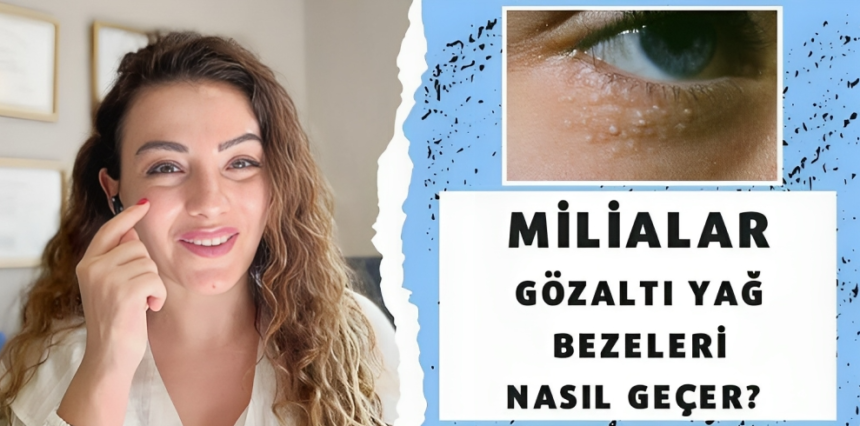Introduction
Milia sometimes referred to as milialar are tiny cysts that form just under the skin’s surface most commonly on the face. These small white- or yellow-colored bumps might resemble whiteheads or pimples but they are not a form of acne. Unlike acne, milia do not develop in pores and are not red or inflamed. In this article, we’ll delve into the causes types of diagnosis, and effective ways to manage milia (Milialar).
What Causes Milia (Milialar)?
Milia occur due to the trapping of keratin and dead skin cells beneath the skin. Unlike acne which forms within pores, milia develops just under the top layer of skin. Here are the main types of milia:
Neonatal Milia:
- Common in newborns especially around the nose but can appear on other facial areas scalp or torso.
- Usually resolves on its own within the first few weeks of life.
Juvenile Milia:
- Linked to rare genetic disorders causing abnormal cell growth.
- Examples include Bazex-Dupré-Christol syndrome or pachyonychia congenita.
Milia en Plaque:
- Associated with autoimmune skin conditions like lichen planus or discoid lupus.
- Larger than typical milia and often appear on the face.
Multiple Eruptive Milia (Milialar):
- A rare and aggressive form of milia.
- Found on the head neck and trunk and may be inflamed.
Traumatic Milia:
- Secondary Milia (Milialar) is caused by skin injuries (burns exposure to irritants etc.).
Symptoms and Appearance
Milia appear as small white bumps on the skin typically measuring 1 to 2 millimeters in diameter. They often cluster on the nose cheeks and chin but can occur elsewhere. Unlike acne milia won’t pop and may take time to resolve.
Treatment Options
While Milia (Milialar) often resolve on their own here are some ways to manage them:
Don’t Pick or Poke:
- Avoid attempting to remove milia as it can lead to bleeding scabbing and scarring.
- Picking can introduce germs and cause infection.
Gentle Cleansing:
- Wash your face with a mild paraben-free soap daily.
- Pat your skin dry to prevent chafing.
Steam Open Pores:
- Sit in a steamy bathroom for 5-8 minutes to release trapped irritants.
- Rinse with lukewarm water afterward.
Exfoliation:
- Use exfoliating cleansers containing salicylic acid citric acid or glycolic acid.
- Start with once a week and observe improvement.
Facial Peels:
- Consider using facial peels with exfoliating ingredients.
Consult a Dermatologist:
- If Milia (Milialar) persists or causes discomfort seek professional advice.
- Procedures like laser ablation may be effective1.
Types of Raised Skin Bumps
1. Acne
- Description: Acne is a prevalent skin condition affecting up to 50 million Americans annually.
- Appearance: It presents as skin breakouts including blackheads whiteheads pimples or deep painful cysts and nodules.
- Severity: Acne can range from small and painless to large and painful.
- Treatment: Various treatments are available including topical creams oral medications and lifestyle modifications.
- Impact: If left untreated acne may lead to scarring or skin darkening.
2. Contact Dermatitis
- Description: Contact dermatitis occurs when the skin reacts to an allergen or irritant.
- Symptoms: Itchy red scaly or raw skin with visible borders.
- Causes: Exposure to substances like poison ivy or bleach.
- Treatment: Avoiding the triggering substance and using soothing creams or ointments.
- Bumps: Raised red bumps that may ooze drain or crust.
3. Keratosis Pilaris
- Description: Commonly seen on arms and legs.
- Appearance: Patches of slightly red bumpy skin that feel rough.
- Aggravating Factor: Dry weather.
- Natural Resolution: Often clears up by mid-20s.
4. Bullae (Fluid-Filled Blisters)
- Description: Clear watery blisters larger than 1 centimeter.
- Causes: Friction contact dermatitis or chickenpox.
- Infection Risk: If the clear liquid turns milky the infection may be present.
When to Seek Help
- Most skin bumps are harmless and do not require treatment.
- Consult a doctor if bumps cause discomfort or if you notice any changes.
- Seek medical attention for persistent painful or concerning bumps.
Remember patience and proper care are key when dealing with Milia (Milialar). If you have concerns consult a healthcare provider. Your skin deserves the best!






